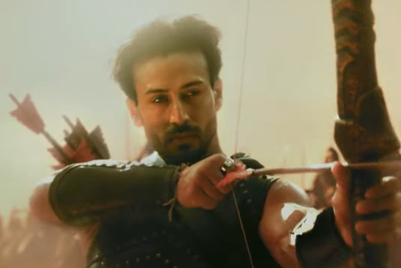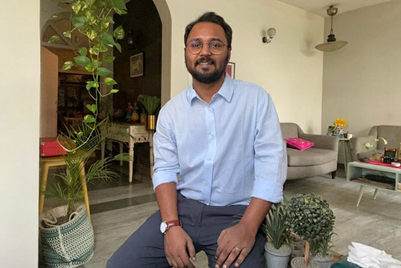
The last few weeks have seen a visible new trend in Indian advertising. Rediffusion elevated Navonil Chatterjee and Rahul Jauhari as joint presidents when Dhunji Wadia retired as CEO of the agency last month.
Also, MullenLowe Lintas announced that Amer Jaleel and Virat Tandon would lead the MullenLowe Lintas group as Arun Iyer moves to a consulting role.
Campaign US ran a lead story late last week, ‘Co-CEOs: Pros and cons of sharing the reins’ where Lindsay Stein talks about how every plane has a co-pilot onboard, but nobody in a car wants a backseat driver in the vehicle.
She questions if and how co-CEOs manage to share responsibilities without stepping on each other’s toes? Lindsay in her article picks the examples of Terri & Sandy’s Terri Meyer and Sandy Greenberg, Refinery29’s Justin Stefano and Philippe von Borries, Fancy’s Katie Keating and Erica Fite and Pitch’s Marisstella Marinkovic and Sara Bamossy. It makes interesting reading.
The Indian announcements of last week are actually not without precedent.
At Rediffusion itself, the agency was co-founded by Diwan Arun Nanda and Ajit Balakrishnan way back in 1973 (though back then they also had Mohammed Khan as a partner) and has been run all these years by the two together. Nanda and Balakrishnan also co-own Rediff.com and have been known to have divided management responsibilities across both their entities between them. The arrangement seems to have worked perfectly well for an agency that is now getting close to its 50th birthday. Hence, passing on the baton to Messrs Chatterjee and Jauhari seems like keeping a tradition alive.
Rediffusion is not the only agency to have had partner-CEOs. Triton Communications was co-founded by Ali Merchant and Munawar Syed about 25 years back, and the duo continue to run the agency even today.
Before they sold Capital Advertising to Publicis in 2007, Sunil Sachdeva and HV Subramaniam were the co-CEOs of this Delhi ad agency. Ashok Kurien and Elsie Nanji were owner-partners of Ambience Advertising, and jointly ran the agency till their exit through sale to Publicis. For a period of time, about 10 years ago, V. Shantakumar and S. Ghosh shared the CEO role at Saatchi & Saatchi India. Brothers Harinder and Shailendra Singh co-founded Percept Advertising and continued to be joint-CEOs till they had a major fallout between them. Today, the most visible example of co-ownership and co-management of an agency is Dentsu Taproot where Agnello Dias and Santosh Padhi continue to helm the agency despite having sold majority equity to Japanese major, Dentsu a few years ago.
My own father, Sandeep Goyal enjoyed a long and fruitful partnership with creative genius Gullu Sen, whom he met at HTA-Delhi when he was an Account Executive and Sen was an Art Director. Goyal and Sen moved together to Trikaya Grey to Mudra’s Interact Vision to Rediffusion DY&R to
Dentsu where they co-shared management leadership for 8 years. The Goyal-Sen team actually stayed together for 25 long years before parting in 2011 when Goyal sold his equity stake in Dentsu India and came under a binding non-compete contract that ruled him out of advertising for the next 5 years atleast. Gullu Sen then moved on to co-found and co-manage FHO Advertising with Rajesh Aggarwal. FHO recently tied up with Daiko of Japan.
Opinion is divided on whether co-CEOs work. Lindsay Stein’s analogy of the co-pilot of a plane versus a back-seat driver in a car is actually quite telling. It has been seen that in a co-CEO arrangement, one leader may bring a particular skill set to the table or manage a part or region of the company better than the other can. But in all such situations it has to be equally clear why co-managing is being done in order for it to be effective.
It has been seen also that the co-CEO arrangement doesn’t work very well if the co-CEOs are overly competitive and do not know how to work to their individual strengths or complement each other appropriately.
The best test of the co-CEO set up is when worst-case scenarios need to be handled. In such a situation what happens if there is a serious disagreement about an important company decision or a client related issue? Are there a board of advisors or any other equivalent entity in place to help resolve conflict? Who will take the final call? And what happens if the co-leadership develops cracks? It is perhaps for this reason that WPP, post the departure of Sir Martin Sorrell, having appointed Mark Read and Andrew Scott to co-lead the advertising conglomerate, finally opted in favour of just Mark Read as CEO.
Longevity of a relationship between incumbents is often held out as a binding glue for a co-CEO team. Karen Robinovitz and Raina Penchansky of Digital Brand Architects in the US are often quoted as great examples of how co-CEOs can work well despite physically not being in the same
geography. Robinovitz operates from New York while Penchansky lives and works out of Los Angeles. It is the fact that they have been buddies for over 20 years that keeps their partnership well-oiled and alive.
I am not sure how long Chatterjee-Jauhari or Jaleel-Tandon have known each other, or had time to get their frequencies adjusted and matched. Running an ad agency has its many challenges, especially dealing with difficult client situations on one side, and handling difficult talent issues on
the other. It will be interesting to see how the arrangements pan-out. In all the examples of Nanda-Balakrishnan or Kurien-Nanji or Dias-Padhi, both partners were/are also business co-owners which may have kept them bonded better together. The co-CEOs at both Rediffusion and Lowe are professional managers. Equity togetherness may not just be the winning mantra for them. A good space to watch!
(Carol Goyal, a Mumbai-based lawyer, blogs on a variety of subjects that interest her.)









.jpg&h=268&w=401&q=100&v=20250320&c=1)
